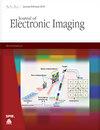Toward effective local dimming-driven liquid crystal displays: a deep curve estimation–based adaptive compensation solution
IF 1
4区 计算机科学
Q4 ENGINEERING, ELECTRICAL & ELECTRONIC
引用次数: 0
Abstract
Local backlight dimming (LBD) is a promising technique for improving the contrast ratio and saving power consumption for liquid crystal displays. LBD consists of two crucial parts, i.e., backlight luminance determination, which locally controls the luminance of each sub-block of the backlight unit (BLU), and pixel compensation, which compensates for the reduction of pixel intensity, to achieve pleasing visual quality. However, the limitations of the current deep learning–based pixel compensation methods come from two aspects. First, it is difficult for a vanilla image-to-image translation strategy to learn the mapping relations between the input image and the compensated image, especially without considering the dimming levels. Second, the extensive model parameters make these methods hard to be deployed in industrial applications. To address these issues, we reformulate pixel compensation as an input-specific curve estimation task. Specifically, a deep lightweight network, namely, the curve estimation network (CENet), takes both the original input image and the dimmed BLUs as input, to estimate a set of high-order curves. Then, these curves are applied iteratively to adjust the intensity of each pixel to obtain a compensated image. Given the determined BLUs, the proposed CENet can be trained in an end-to-end manner. This implies that our proposed method is compatible with any backlight dimming strategies. Extensive evaluation results on the DIVerse 2K (DIV2K) dataset highlight the superiority of the proposed CENet-integrated local dimming framework, in terms of model size and visual quality of displayed content.实现有效的局部调光驱动液晶显示器:基于深度曲线估计的自适应补偿解决方案
局部背光调光(LBD)是液晶显示器提高对比度和节省能耗的一项有前途的技术。局部背光调光由两个关键部分组成,即背光亮度确定和像素补偿,前者用于局部控制背光单元(BLU)每个子块的亮度,后者用于补偿像素强度的降低,以获得令人愉悦的视觉质量。然而,目前基于深度学习的像素补偿方法存在两方面的局限性。首先,虚构的图像到图像转换策略很难学习输入图像和补偿图像之间的映射关系,尤其是在不考虑调光等级的情况下。其次,大量的模型参数使得这些方法难以应用于工业领域。为了解决这些问题,我们将像素补偿重新表述为特定于输入的曲线估计任务。具体来说,一个深度轻量级网络,即曲线估算网络(CENet),将原始输入图像和调光 BLU 作为输入,估算出一组高阶曲线。然后,应用这些曲线迭代调整每个像素的强度,以获得补偿图像。有了确定的 BLU,建议的 CENet 就能以端到端的方式进行训练。这意味着我们提出的方法与任何背光调光策略都是兼容的。在 DIVerse 2K (DIV2K) 数据集上的广泛评估结果凸显了所提出的 CENet 集成局部调光框架在模型大小和显示内容的视觉质量方面的优越性。
本文章由计算机程序翻译,如有差异,请以英文原文为准。
求助全文
约1分钟内获得全文
求助全文
来源期刊

Journal of Electronic Imaging
工程技术-成像科学与照相技术
CiteScore
1.70
自引率
27.30%
发文量
341
审稿时长
4.0 months
期刊介绍:
The Journal of Electronic Imaging publishes peer-reviewed papers in all technology areas that make up the field of electronic imaging and are normally considered in the design, engineering, and applications of electronic imaging systems.
 求助内容:
求助内容: 应助结果提醒方式:
应助结果提醒方式:


